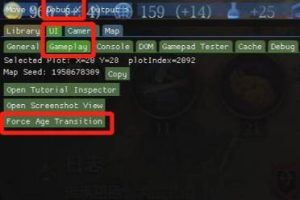
如何使用MySQL和Python实现一个简单的博客系统
在这篇文章中,我们将使用MySQL和Python来创建一个简单的博客系统。我们将使用MySQL来存储博客的数据,包括博客的标题、内容、作者和发布日期。我们将使用Python作为后端语言来处理与数据库的交互,并提供一个简单的用户界面来管理和展示博客。
首先,我们需要安装MySQL和Python的相关依赖库。你可以使用以下命令来安装它们:
pip install mysql-connector-python
接下来,我们将创建一个名为”blog”的数据库,以及一个名为”posts”的表格来存储博客的数据。你可以使用以下代码来创建它们:
import mysql.connector
# 连接MySQL数据库
mydb = mysql.connector.connect(
host="localhost",
user="yourusername",
password="yourpassword"
)
# 创建数据库
mycursor = mydb.cursor()
mycursor.execute("CREATE DATABASE blog")
# 使用数据库
mycursor.execute("USE blog")
# 创建博客表格
mycursor.execute("CREATE TABLE posts (id INT AUTO_INCREMENT PRIMARY KEY, title VARCHAR(255), content TEXT, author VARCHAR(255), publish_date DATE)")
现在,我们已经准备好可以开始编写Python代码了。我们将创建一个简单的博客类,其中包含几个方法用于管理博客的数据。
import mysql.connector
class Blog:
def __init__(self, host, user, password, database):
# 连接MySQL数据库
self.mydb = mysql.connector.connect(
host=host,
user=user,
password=password,
database=database
)
# 创建游标对象
self.mycursor = self.mydb.cursor()
def create_post(self, title, content, author, publish_date):
# 插入博客数据到数据库
sql = "INSERT INTO posts (title, content, author, publish_date) VALUES (%s, %s, %s, %s)"
val = (title, content, author, publish_date)
self.mycursor.execute(sql, val)
# 提交事务
self.mydb.commit()
def get_all_posts(self):
# 查询所有博客数据
self.mycursor.execute("SELECT * FROM posts")
result = self.mycursor.fetchall()
# 返回查询结果
return result
def get_post_by_id(self, post_id):
# 根据博客ID查询数据
self.mycursor.execute("SELECT * FROM posts WHERE id = %s", (post_id,))
result = self.mycursor.fetchone()
# 返回查询结果
return result
def update_post(self, post_id, title, content, author, publish_date):
# 更新博客数据
sql = "UPDATE posts SET title = %s, content = %s, author = %s, publish_date = %s WHERE id = %s"
val = (title, content, author, publish_date, post_id)
self.mycursor.execute(sql, val)
# 提交事务
self.mydb.commit()
def delete_post(self, post_id):
# 删除博客数据
self.mycursor.execute("DELETE FROM posts WHERE id = %s", (post_id,))
# 提交事务
self.mydb.commit()
现在,我们可以使用这个博客类来进行博客的管理。以下是一个简单的示例:
blog = Blog("localhost", "yourusername", "yourpassword", "blog")
# 创建博客
blog.create_post("第一篇博客", "这是我的第一篇博客内容", "作者A", "2021-01-01")
# 获取所有博客
posts = blog.get_all_posts()
for post in posts:
print(post)
# 获取指定ID的博客
post = blog.get_post_by_id(1)
print(post)
# 更新博客
blog.update_post(1, "更新后的博客标题", "更新后的博客内容", "作者B", "2021-02-01")
# 删除博客
blog.delete_post(1)
以上代码仅作为示例,你可以根据自己的需求来进行修改和扩展。例如,你可以添加更多的字段来存储博客的标签、浏览量等信息。你还可以添加用户认证和权限管理功能来增强博客系统的安全性。
希望这篇文章能帮助你了解如何使用MySQL和Python来实现一个简单的博客系统。如果你有任何问题,欢迎在评论区留言,我将尽力解答。
原文来自:www.php.cn© 版权声明
文章版权归作者所有,未经允许请勿转载。
THE END


















































暂无评论内容